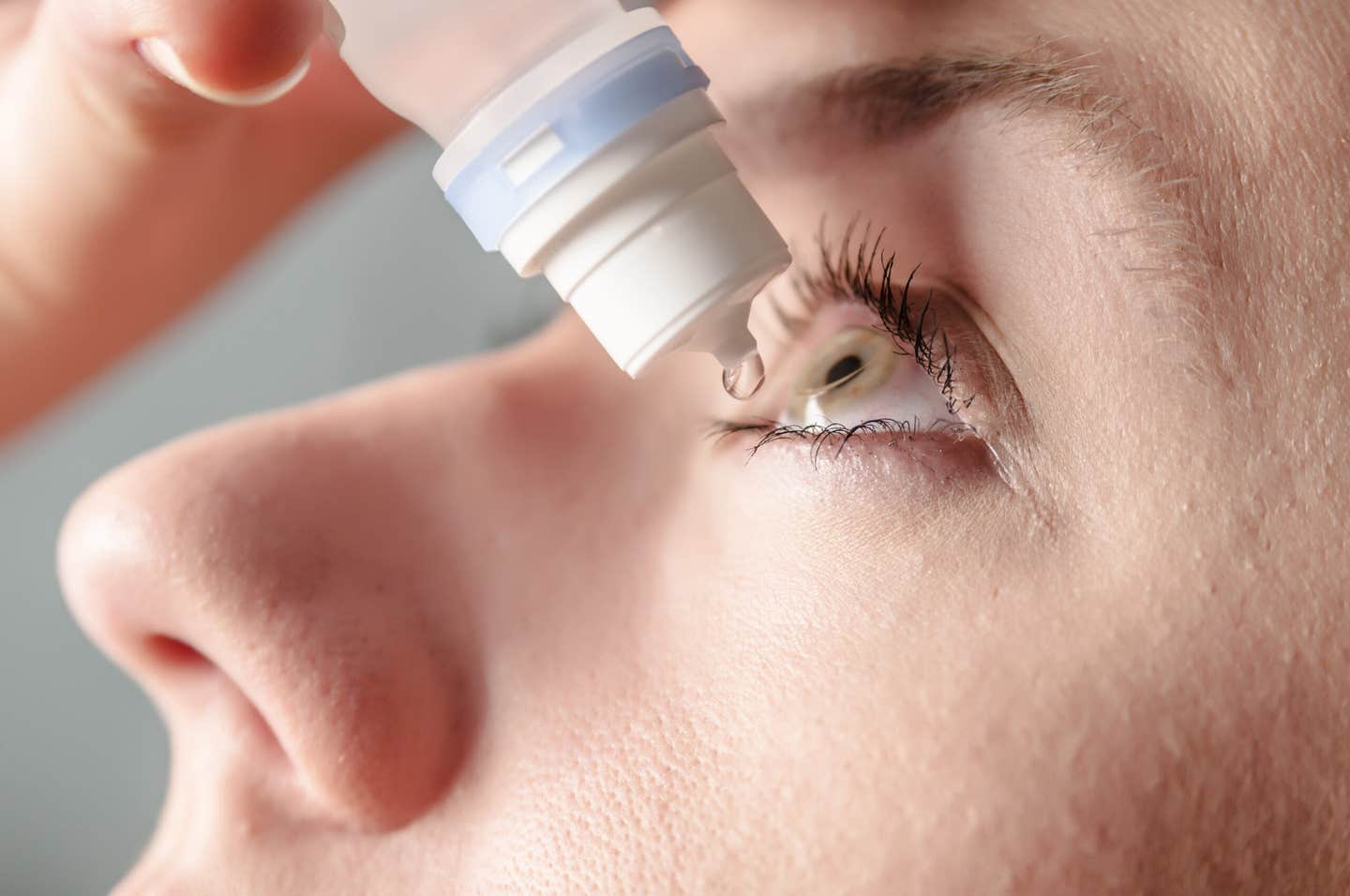New eye drops could replace reading glasses for millions
FDA approves VIZZ, the first aceclidine-based eye drop for presbyopia, offering 10 hours of clear near vision without glasses.

A new FDA-approved eye drop promises clearer near vision for up to 10 hours without glasses. (CREDIT: Shutterstock)
The Food and Drug Administration has approved the first aceclidine-based eye drop designed to improve near vision in adults with presbyopia. This age-related condition affects more than 100 million people in the United States and often starts after age 45. The new treatment, called VIZZ, promises sharper vision for up to 10 hours with just one drop per day and will be available within three months.
Produced by LENZ Therapeutics, VIZZ offers relief from blurry near vision without the side effects seen in earlier treatments. “The FDA approval of VIZZ is a defining moment for LENZ and represents a transformative improvement in the available treatment options for the 128 million adults living with blurry near vision in the United States,” said Eef Schimmelpennink, the company’s president and CEO.
How the Drops Work
VIZZ uses aceclidine to gently shrink the pupil, creating a “pinhole effect” similar to narrowing a camera lens. This effect increases depth of focus and brings nearby objects into sharper clarity. Unlike older treatments, VIZZ does not significantly affect the ciliary muscle, which controls the lens shape for focusing. That means your distance vision remains clear, avoiding the “zoomed-in” or myopic shift often caused by other eye drops.
The result is improved reading vision for most of the day, without the need for glasses or the common discomfort of earlier options. You can read a menu, scan your phone, or view a computer screen without losing sharpness when you glance across the room.
How It Compares to Previous Eye Drops
The first FDA-approved eye drops for presbyopia, Vuity (pilocarpine hydrochloride 1.25%), debuted in 2021 and were praised for helping people see clearly up close within 15 minutes. Vuity also relied on the pinhole effect but used a dual-action mechanism that stimulated the ciliary muscle along with pupil constriction.
Related Stories
- Say goodbye to reading glasses: New eye drops are revolutionizing vision care
- Breakthrough eye drops reverse vision loss from age-related macular degeneration
While Vuity offered fast, glasses-free vision correction, it sometimes came with tradeoffs. Some users reported brow heaviness and, in rare cases, vitreoretinal issues involving the retina and vitreous fluid. These side effects stemmed from the extra strain placed on the ciliary muscle.
VIZZ avoids these complications by using aceclidine, which targets only the pupil. “This FDA approval represents a disruptive paradigm shift in treatment options for millions of people who are frustrated and struggling with the inevitable age-related loss of their near vision,” said Marc Bloomenstein of the Schwartz Laser Eye Care Center. He believes the drops could quickly become the standard of care.
Evidence Behind the Approval
The FDA’s decision followed three randomized, double-masked, controlled Phase II studies involving hundreds of participants. Over more than 30,000 treatment days, no serious adverse events were reported. The drops were well-tolerated, and volunteers experienced consistent improvement in near vision without noticeable tradeoffs in distance clarity.
Presbyopia is nearly universal with age. As the eye’s lens hardens over time, it loses flexibility, and the optical muscles cannot shift focus as easily. This gradual process makes everyday tasks such as reading labels or instructions more difficult. For many, the change is subtle at first but can progress quickly, making corrective measures a daily necessity.
Traditional fixes include reading glasses, bifocals, or multifocal contact lenses. While effective, these solutions can be inconvenient for people who switch often between near and far tasks. For some, eye drops like VIZZ offer a more seamless option.
What to Expect Next
LENZ plans to make VIZZ broadly available by prescription in the fourth quarter of 2025. Schimmelpennink describes the treatment as “uniquely engineered” to deliver both quick onset and lasting results for most patients. He emphasizes that it is the only pupil-selective, ciliary-sparing myotic approved for presbyopia.
The data supporting the approval comes directly from company-led trials, and peer-reviewed publications are expected to follow. This sequence is common in ophthalmology, where regulatory clearance often precedes formal journal publication.
The arrival of VIZZ could mark a turning point in how presbyopia is treated. For many adults, it may offer a way to reduce dependence on reading glasses without compromising other aspects of vision. And for eye care specialists, it expands the range of tools available to help patients manage the inevitable changes that come with aging eyes.
Note: The article above provided above by The Brighter Side of News.
Like these kind of feel good stories? Get The Brighter Side of News' newsletter.



